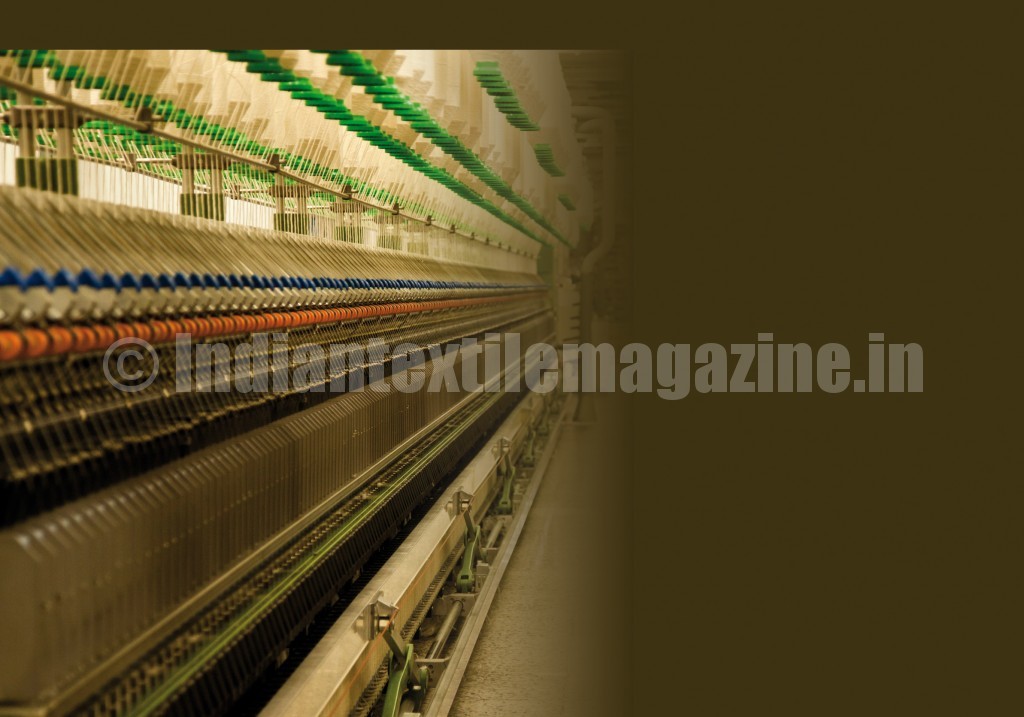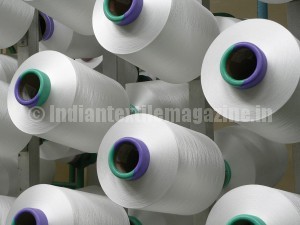Spurt in demand on higher consumer spending seen

Global fibre production for 2012 is estimated at 82 million tonnes, registering an increase of 1.2 per cent over 2011. Cotton fibres production is estimated to be 26 million tonnes, while man-made fibre (MMF) production is likely to account for 55 million tonnes. Polyester fibre in the MMF segment accounted for an estimated 41.3 million tonnes (75 per cent). Polyester and cotton together accounted for 82 per cent of the fibre volumes produced. Global fibre demand is expected to increase by three per cent on medium term due to rising population and growing prosperity in the emerging markets.
China emerged the biggest manufacturer of all MMF fibres with 35.5 million tonnes production volume, accounting for 64.5 per cent of global MMF production. On the price front, cotton fibre’s clear downward trend from mid-2012 is putting pressure on all other fibres.
Global cotton fibre production declined by 3.7 per cent from 27 million tonnes in 2011 and reached 26.01 million tonnes in 2012. Consumption, however, registered an increase of four per cent from 22.42 million tonnes to 23.32 million tonnes. Cotton production in 2013-14 is likely to further decline to 23.47 million tonnes.
Polyester
Polyester production increased by five per cent over 2011 to reach 41.31 million tonnes in 2012 covering 50 per cent of the fibres produced worldwide. Staple fibre production grew by 3.4 per cent to reach 14.9 million tonnes, and polyester filament yarn (PFY) increased by 5.7 per cent to touch 26.4 million tonnes. In 2012, 75 per cent capacity utilisation summed up to the global polyester production of 41.31 million tonnes. Polyester fibre production is estimated to grow at six-seven per cent from 2013 to 2015.
In 2012, global production of man-made cellulose fibre expanded much faster than the other fibres and is estimated at 6.8 per cent. Production volumes of polyamide fibres increased by 3.8 per cent, while acrylic fibres declined by four per cent.

Indian fibre industry
India’s fibre production declined by two per cent to reach an estimated 9.6 million tonnes in 2012-13 compared to 9.8 million tonnes in 2011-12. Cotton fibre production declined by an estimated 4.1 per cent from 6.03 million tonnes to 5.78 million tonnes. Cotton accounted for 60 per cent of the total fibres produced in India in 2012. Polyester fibre output has reached an estimated 3.30 million tonnes as against 3.26 million tonnes in 2011, a marginal increase of 1.2 per cent. Polyester fibre accounted for 34 per cent of India’s total fibre production in 2012.
India’s fibre consumption increased by 9.7 per cent over the previous year to reach an estimated 8.23 million tonnes in 2012-13 as compared to 7.50 million tonnes. Cotton fibre led the consumption increase, growing at a rate of 13 per cent, followed by polyester fibre at 6.1 per cent.
India’s current per capita consumption of all fibres is 6.86 kg. However, for polyester fibre, India’s per capita consumption for 2012 was 2.45 kg as against a global value of 5.85 kg. Polyester fibre accounts for 36 per cent of the per capita fibre consumption in India.
Fabric scenario
India’s yarn and fabric production increased largely on account of growth in 100 per cent cotton as well as the blended category. Fabric production is estimated to increase by four per cent. However, yarn production is likely to show an impressive growth of 11 per cent.
Production increases for cotton fabric and cotton yarn for 2012 are estimated to reach 12 per cent and 14 per cent respectively. The blended fabric and yarn also witnessed positive growth in 2011-12. Fabric production in the 100 per cent non-cotton segment declined due to lower offtake in domestic and export markets. The 100 per cent non-cotton yarn production, however, remained at the same level of that in 2011-12.
Polyester scene
Polyester fibre demand grew at six per cent, driven by PSF and FDY, in 2012-13. The year was characterised by high capacity additions in the PFY and FDY segments. The operational capacity declined to 68 per cent as a whole, as new PFY capacity struggled to place the volumes in the market amid price erosion in the domestic and export markets. The growth was limited due to power shortage in southern States. Production is stable at 3.30 million tonnes.
The polyester fibre outlook remains positive and demand is estimated to increase by six per cent to seven per cent from 2013 to 2016. The estimated decline in production of cotton fibre in 2013-14 due to declining acreage, gradual recovery in economic growth and favourable measures taken by the Government for the textile sector augurs well for polyester fibre demand.
Polyester filament yarn (PFY) again proved to be the preferred capacity addition segment; the capacity grew by around 15 per cent to 3.67 million tonnes in 2012-13 from 3.18 million tonnes in 2011-12. PFY estimated production grew by 1.2 per cent to 2.41 million tonnes from 2.38 million tonnes.
In 2012-13, estimated domestic demand stood at 2.22 million tonnes against 2.08 million tonnes in 2011-12, growing by 6.7 per cent. The captive POY demand saw huge increase of 7.6 per cent due to conversion of POY to DTY as value addition process.
Exports declined by 22 per cent to estimated 0.18 million tonnes in 2012-13 from 0.23 million tonnes in 2010-11. The decline in the POY segment was attributed to the Syrian market collapse and political disturbances in the Middle East markets.
Capacity utilisation of total demand stood at an estimated 66 per cent in 2012-13 PFY is estimated to grow by seven-eight per cent between 2013 and 2016, due to higher growth in home textiles, women’s wear and automotive segment.
The estimated demand for polyester staple fibre (PSF) increased by 4.2 per cent to reach 0.72 million tonnes in 2012-13 against 0.69 million tonnes in 2011-12. The upside potential was limited owing to power cut in southern States and decline in production of 100 per cent non-cotton fabrics and yarns.
Production declined by 1.2 per cent to estimated 0.88 million tonnes from 0.89 million tonnes. Exports declined due to suppressed demand from Europe and weakness in the global market.
Capacity utilisation on total demand stood at an estimated 73 per cent in 2012-13.
PSF is estimated to grow at five-seven per cent between 2013 and 2016 following lower forecast of cotton production next year, anticipated higher retail growth, home textiles, non-woven segment and industrial textiles.
Industry demand drivers
India’s consumer spending is going through a fundamental shift. The per capita income is likely to increase by 11.7 per cent to reach Rs. 5,729 per month in 2012-13, compared to Rs. 5,130 in the previous fiscal. So, the strong demand for better lifestyle and high disposable income has acted as an icing on the cake for the industry.
India’s per capita fibre consumption for 2012 was 5-6 kg as against the global average of 10.6 kg, implying significant scope for penetration and higher growth opportunity. Every year, 14 million people will be added to India’s employment list. This increase in corporate workforce, along with the shift in tastes and preferences, is expected to fuel the apparel industry demand.
There is fair growth in the organised retail segment. India’s retail market is expected to grow from $470 billion in 2011 to $675 billion in 2016, registering a CAGR of 7.5 per cent. The apparel market growth will be driven by rapid urbanisation, modernisation, entry of foreign brands, rapid emergence of malls in metro cities as well as in Tier-I and Tier-II cities.
The Government has taken a number of initiatives like TUFS, integrated textile parks, etc., 100 per cent FDI under the automatic route, duty drawback schemes and excise duty abatement on readymade garments to help increase overseas demand for Indian textile products.